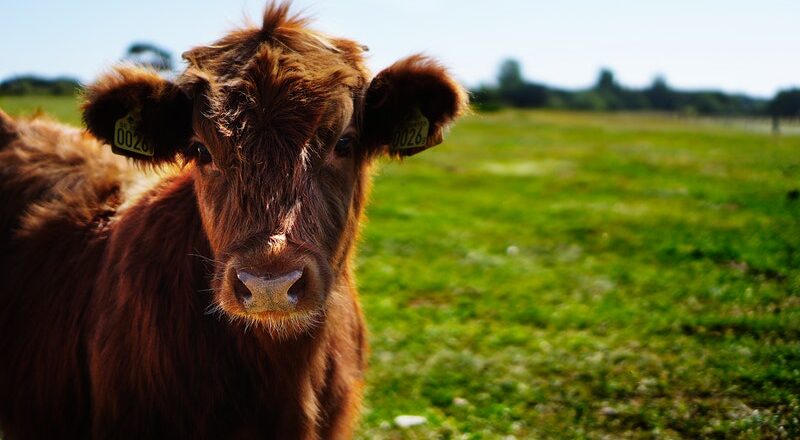
The FAO’s role in sustainable cattle farming
The FAO is committed to providing comprehensive and reliable assessments of the environmental impacts of the livestock sector, their mitigation potential and the concomitant effects on food security and poverty reduction. This is essential for enhancing policy dialogue and for establishing the right strategic direction to follow.
Livestock and cattle farming are essential for the livelihood of much of the world’s population, particularly in areas where people live in poverty. The global demand for animal products is increasing especially in developing countries, thanks to progressive urbanization, population growth and the rising incomes of the population: it is estimated that this demand will increase by 70% in order to feed a world population that is expected to reach 9.6 billion people by 2050.
In this context it is believed that the global production of meat will more than double from 229 million tonnes in 1999/2001 to 465 million tonnes by 2050, and that the global production of milk will increase from 580 to over 1,000 million tons. The increase in demand for these products is a great opportunity for approximately 1 billion poor people who depend on cattle raising as a source of sustenance and income.
The growing demand for animal products is met mainly due to the rapid expansion of “intensive” livestock farming as well as traditional systems. This reality should be examined in the light of limited natural resources, as the livestock sector puts significant pressure on several ecosystems, on biodiversity, water and soil quality and on global environmental impact.
Livestock farming accounts for 14.5% of greenhouse gas emissions, which influences climate change significantly. Therefore, although this sector provides highly nutritious food, with important positive social and economic implications, and promotes food security and poverty reduction, it requires a large amount of resources.
The livestock sector uses most of the world’s agricultural land for pasture and crop production. The natural resources required for agricultural purposes such as water and land, are becoming increasingly scarce and are continually threatened by pollution and climate change.
In this context, the United Nations Food and Agriculture Organization (FAO) supports the sustainable development of livestock farming, with the aim of reducing their environmental impact and resource utilization while increasing production efficiency at the same time. Producers, society and governments are aware of these impacts and are implementing concrete risk-reduction measures in order to improve the use of natural resources.
In particular, two partnerships were formed in which the FAO is actively involved, which brings together various stakeholders (governments, the public and private sector, producers, civil society, international community organizations, research centres and academia, and donors who agree to finance the various FAO projects):
- The Global Agenda for Sustainable Livestock aims to catalyse the actions of interested parties in order to:
Increase production efficiency: by improving animal health and nutrition in the dairy industry it is possible to increase production, reduce the amount of resources required, protect the environment and ensure food safety.
Give value to pasture land: in the case of extensive farming, proper pasture management increases production, enhances soil carbon sequestration and protects biodiversity and water quality. By reducing the number of animals raised and the use of fertilizers, it is possible to increase the quantity and quality of forage.
Improve manure management: in intensive farming, appropriate manure management leads to the reduction of air and water pollution, thanks to biogas production and using manure as fertilizer. The energy and the nutrients obtained can replace fuel and synthetic fertilizers.
- The Livestock Environmental Assessment and Performance Partnership (LEAP) which was founded in 2012, focuses on the development of sector-specific guidelines, in order to quantify and monitor the environmental impact and performance of the livestock sector. The initiative is the result of a consultation process launched in 2010 between the Department of Animal Production and Health of the FAO and a group of representatives of the food and farming industry.
Thanks to the on-going dialogue between the interested parties (governments, private sector and civil society) focused on objectives to be accomplished and team commitment, the project was developed with the aim of creating a partnership between the various stakeholders for benchmarking purposes and for monitoring and improving the environmental performance of the entire meat supply chain, bearing in mind the positive social and economic outcomes.
Thanks to technical, analytical and research skills and by exchanging data and information kept in collective databases, we will get a better understanding of the key factors influencing the performance of the livestock sector and its environmental impact.
The FAO is committed to providing comprehensive and reliable assessments of the environmental impacts of the livestock sector, their mitigation potential and the concomitant effects on food security and poverty reduction. This is essential for enhancing policy dialogue and for establishing the right strategic direction to follow.
Susanna Bramante
Agronomist, nutritional consultant and scientific writer, author and co-author of 11 scientific publications and numerous articles on human nutrition and its impact on health and environment. In 2010 she received the title of Doctor Europaeus and PhD in Animal Production, Health and Food Hygiene in countries with a Mediterranean climate.





